This wonderful program was put on by Boulder County Open Space and Parks at the Longmont Agricultural Heritage Center.
Boulder County Open Space and Parks (which is different than Boulder city's Open Space and Mountain Parks) owns or oversees over 98,000 acres of open space... conserving natural, cultural and agricultural resources. Over 35,000 acres of this is open to the public with some 110 miles of trail.

The previous year, I had done an in depth tour of the area, so today I just quickly walked through, stopping briefly to say hello to some of the resident animals.
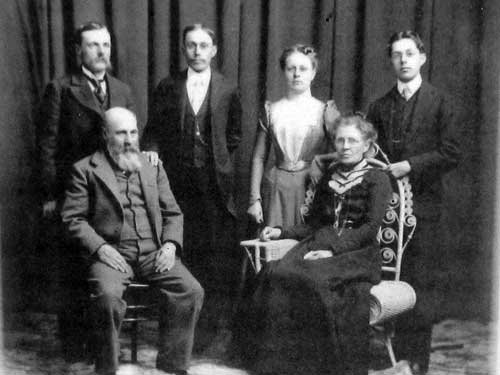
George McIntosh was the site's original homesteader, building a log cabin here in 1868. He convinced his daughter, Minnie Lohr, to move back here with her family. This is the McIntosh family portrait around 1900 (with Minnie in the back row and George in the front left).

The Lohr House was built in 1909.
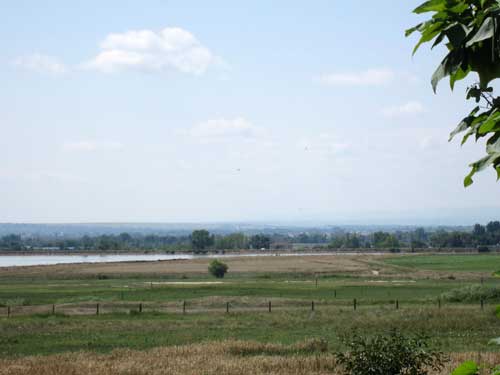
To the west were the magnificent Rocky Mountains and to the south was this lovely view of McIntosh Lake.

The large Stroh-Dickens barn was built in 1900 on the property of William Dickens Jr. (which was later owned by the Stroh family) several miles to the east. The barn was moved here and restored in 1989.

The large Belgian Drafthorse on the right was just a small colt last year!
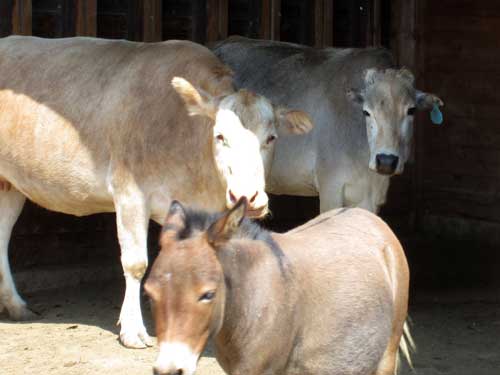
With the looks on the cows' faces as the miniature horse passes by, this could almost be a Farside cartoon!
The program was led by Fred Thrall, a robust man in his late 60's. Back in 2009, he had done a three-week trip along a section of the original Oregon Trail... but he did it as if he were a frontier calvaryman back in the 1860's. He and his horse, Skye, covered 300 miles through some of the most remote open range in the continental USA, using only (well, at least mostly) gear similar to that of the days of old.
The Oregon Trail is a 2,200-mile wagon route that connected the Missouri River to Oregon, crossing Kansas, Nebraska, Wyoming and Idaho (although most of them were just territories at the time, not yet states). From the early 1830's though 1869, the trail and its many offshoots were used by about 400,000 settlers, ranchers, farmers, miners and businessmen along with their families.
Fred's route took him from Casper to historic Fort Bridger, Wyoming. He chose this section of the trail because it was on BLM land (public land run by the Bureau of Land Management) so he wouldn't have to worry about trespassing or getting special permission.
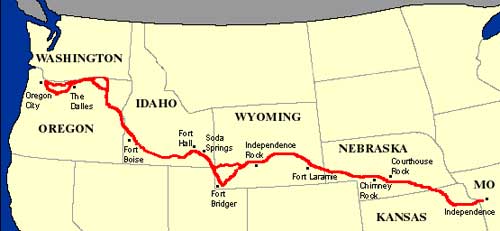
The entire Oregon Trail
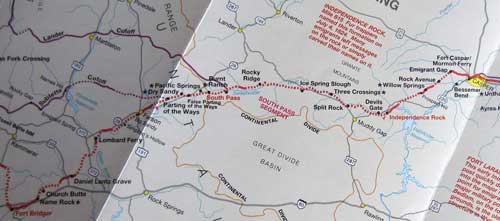
Fred's route. Click for a larger image.
Fred presented a few photos from the trip as well as numerous entertaining (and sometimes harrowing) stories.

Dressed as a frontiersman from the 1860's, complete with wool pants like they would have worn during the Civil War
Some of his stories:
• He had two potentially serious accidents on the trip. The first one was when Skye stepped on an underground badger tunnel that collapsed, sending both horse and rider reeling forward. Fortunately they escaped unscathed. The second was during a river crossing where there were still large patches of snow along the banks. Fred picked a clear spot to ascend but it turned out the bank was still extremely wet. Skye sank in the deep mud, panicked, lost his footing and fell backwards. Again, both were extremely lucky.
• The total weight Skye had to carry was 284 pounds... including Fred, the gear, 9 pounds of human food and 11 pounds of horse food. Since Skye was expending so much energy, Fred felt it was important to supplement his grass diet with grain, just as the calvarymen did with their horses. Back in the old days, this extra weight made it difficult for the calvarymen to fight the local 'Indians' whose horses were super fast, light and ate only grass. But the tides turned during winter. The Indian horses had to sustain themselves on meager bugs and other things they could find by overturning rocks and pawing through the snow. They were starving and weak, unlike the grain-fed calvary horses. That's when the calvary learned to strike... and eventually win the war.
• This was a physically very demanding and difficult trip. Most cowboys/frontiersmen were in their late teens or early 20's... definitely not in their 60's! Fred and Skye averaged about 20 miles per day. It was not a slow stroll but as much trotting as the terrain would allow. They never ran simply because the weight load was too heavy.
• There was plenty of water but not all of it was super safe to drink. Back in the old days, people frequently died of cholera from drinking infected water. Once a week, they stopped in some tiny town on the way to restock their food supplies.

The fully-loaded saddle
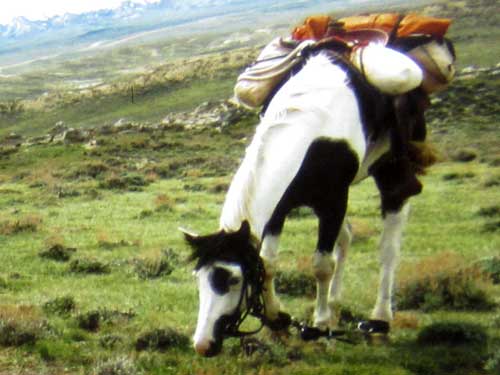
It took Fred a couple of times to learn how to successfully hobble his horse. This was necessary since there were no trees to tie him to, and if a horse got spooked for any reason, the land is so vast you might never find him again. What finally worked was to tie three of his legs loosely together. Even so, one time Skye broke free and Fred had to chase him for 7 miles. Fortunately a fence put an end to the game... although back in the 1860's, there were no fences out here.
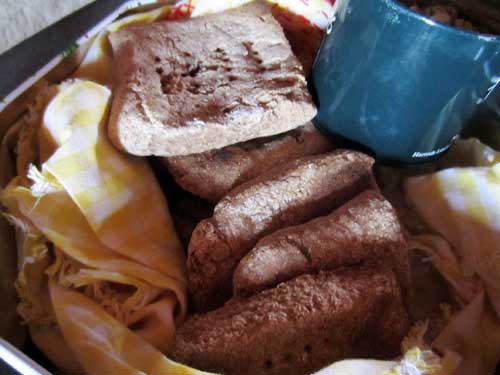
Hardtack is a biscuit made from just flour and water. It is inexpensive and essentially non-perishable. That said, it was SO hard that the frontiersmen had to use the butts of their rifles to break it up and then soak it in coffee before being able to eat it.

That said, the coffee wasn't what you might think of either. The beans were dry and unroasted.

More essential gear

Fred carried a revolver with him, not so much for protection but to be able to put Skye down should the unthinkable happen (such as a broken leg). Being 40 miles from the nearest help, he didn't want to have to think of his beloved horse suffering for days.

The calvaryman's bible

Fred with his gear. Unfortunately Skye couldn't come because of an equine virus going around Boulder County.

Two years ago, Fred and Skye did a one-week, 100 mile trek (50 miles out and 50 miles back) in Dinosaur National Monument. Water was more of an issue here.
Unfortunately Fred doesn't think he'll be doing another trip like this again, in spite of how much he might want to. It is a feat that requires a young body, not just a young-at-heart attitude. Perhaps someday he will write of his amazing adventures.